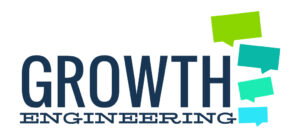Embracing The 70:20:10 Model With Social Learning
There are a few different definitions of informal learning. For convenience’s sake, let’s just say that it’s learning that happens outside of the traditional sphere of education. It’s the learning that occurs once you’ve left the classroom or closed your textbook. Informal learning happens when learners start setting their own learning objectives. They drive the experience.

Studies have shown that 70-90% of learning happens informally on the job. That’s the lion’s share. Let’s break it down a bit further:
- 70% of workplace learning happens ‘on-the-job’ (via experience)
- 20% of workplace learning happens by watching others
- 10% of workplace learning happens through formal training (classroom events, eLearning, etc.)
This is what’s known as the 70:20:10 framework of learning. If you don’t have an informal learning strategy in place to help support and promote this process, then your training programs aren’t going to pack much punch. As if that isn’t impetus enough, here are 11 more reasons to get social:
1. Drive Intellectual Capital
What’s your organization’s most important asset? Your people and the network of information contained within them. As the EIM Institute [1] notes, ‘The value to the organization of such a knowledge repository is almost incalculable’.
According to Babcock [2], Fortune 500 companies lose roughly $31.5b a year by failing to share knowledge. We can empathize, having once lost 50p down the back of a sofa. Still, providing the proper support for informal learning within your organization can help you to fight back.
2. Continuous Learning Experiences
Formal learning experiences all have a beginning and an end. At some stage, you’ll be ushered out of the lecture hall. Your ‘How to Code for Dummies’ textbook will end at some stage. Conversely, informal learning has no predefined end-point. It can expand to cover any necessary ground whenever the need arises. Informal learning experiences expand and evolve as circumstances change and events unfurl.
If your learners are an ambitious bunch, they won’t want the learning experience to end. Supporting an informal learning approach can help you to keep that ball rolling.
3. Promote Innovation
A survey from Deskmag magazine [3] recently found that improved teamwork, collaboration, and knowledge sharing spurs creativity and confidence. Indeed, 71% of those questioned suggest that they were more creative because of their team-orientated environment.
4. Engage Your Team
Sharing drives engagement. A Harvard study [4] has found that sharing triggers the reward centers in our brain and can even trigger the release of dopamine. Researchers found that there was a larger amount of ‘activity’ in the reward region of the brain when subjects were able to share information with friends and family members, than there was when they were forced to keep the information to themselves.
The study concluded that sharing (on social media) can give us the same pleasure that food, money, and sex does. More than that, however, supporting an informal learning approach can help to foster a ‘we’re all in this together’ culture that can lead to increased levels of motivation and drive among team-mates.
5. Informal Learning Is Effective
The McKinsey Global Institute [5] estimates that by ‘fully implementing social technologies’, organizations can raise the productivity of their employees by ‘20 to 25%’. Imagine if you were able to squeeze that much more out of your team. That’d be like adding an additional thruster to Concorde.
6. Formal Learning Is (Sometimes) Ineffective
Ebbinghaus’ forgetting curve shows that if we don’t contextualize information, we forget it within an hour. Yikes. We like to think of our brain as a giant pink sponge, but in truth, it’s a leaky sieve. Luckily, embracing informal learning can help you to turn that forgetting curve upside down. By providing your team with more opportunities to practice, discuss, and contextualize the information you’ll soon increase retention.
7. Autonomy Sparks Motivation
We’ll leave this one to Daniel Pink: “Carrots & Sticks are so last Century… For 21st century work, we need to upgrade to autonomy, mastery and purpose”. Here’s the link to his TED Talk.
8. Increased Flexibility
Collaborative tools of all shapes and sizes are helping to facilitate the move towards a telecommuted workforce. As this happens, business can expect to strip back a significant chunk of their operating costs. In fact, according to ZDNet [6], 28% of UK workers would accept a lower salary in return for flexible working privileges.
There are benefits to having a mobile workforce too. A Kcom survey [7] recently revealed that 72% of global businesses say that flexible working practices increases employee productivity.
9. It’s The Future
An Econsultancy report [8] found that collaboration tools is important to 86% of organizations. We assume that the remaining 14% are a bunch of fun-hating hermits!
10. Employee Retention
Teamwork, collaboration, and knowledge sharing helps to foster an exciting and engaging workplace culture. We’re more likely to stick around in an environment where we feel like we are still developing and learning from our peers. As the American Psychological Association note, 63% of us stick with our current organization because we feel ‘connected’ with it.
11. Save Money
Points one-through-ten prove that informal learning is effective. It’s driven by your learners and like a nightmarish tapeworm, it doesn’t end. It’s motivational. And it works wonders for your organizational wallet.
Think of the savings you could accrue across your business. As the McKinsey Global Institute notes, the average employee spends an estimated 20% of their time looking for internal information or tracking down colleagues who can help with specific tasks. On the flip-side, a searchable record of knowledge can reduce the time that employees spend searching for company information by as much as 35%. That will leave them with more time to do the things that really impact your bottom line.
What’s more, information transparency leads to better decisions. Having all your information sunning itself out in the open helps your team to make informed judgments and to create business growth.
And isn’t that what it’s all about?
References:
- Intellectual Capital: A Human Resources Perspective
- Shedding Light on Knowledge Management
- Advantages of coworking spaces over other offices
- New Harvard Study Shows Why Social Media Is So Addictive for Many
- The social economy: Unlocking value and productivity through social technologies
- Linux: It's where the jobs are
- What will the high performance workplace look like in 2020?
- 75% of businesses to use social collaboration tools in 2013 [infographic]


